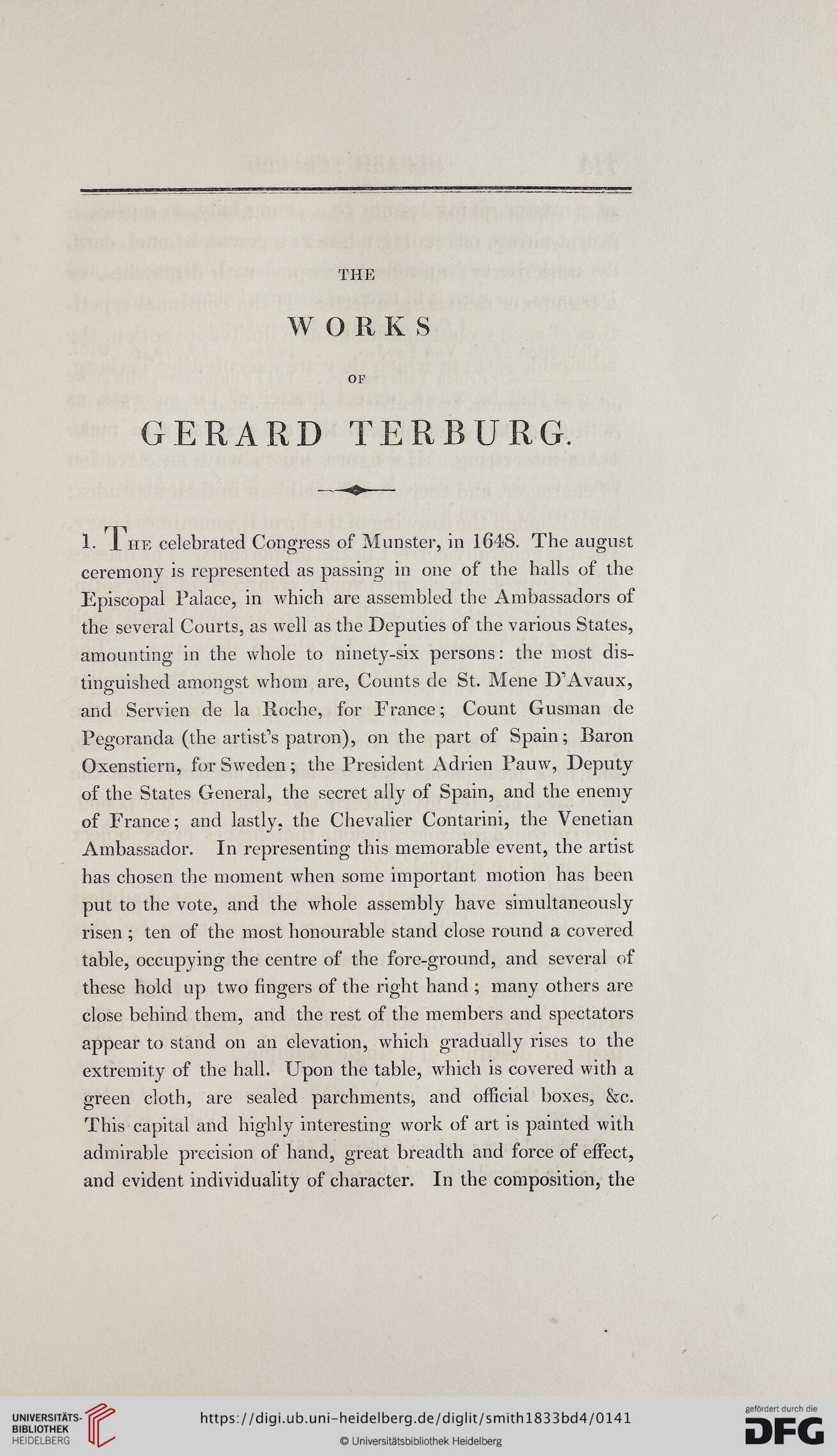THE
WORKS
OF
GERARD TERBURG.
1- 1 he celebrated Congress of Munster, in 1648. The august
ceremony is represented as passing in one of the halls of the
Episcopal Palace, in which are assembled the Ambassadors of
the several Courts, as well as the Deputies of the various States,
amounting in the whole to ninety-six persons: the most dis-
tinguished amongst whom are, Counts de St. Mene D’Avaux,
and Servien de la Roche, for France; Count Gusman de
Pegoranda (the artist’s patron), on the part of Spain; Baron
Oxenstiern, for Sweden; the President Adrien Pauw, Deputy
of the States General, the secret ally of Spain, and the enemy
of France; and lastly, the Chevalier Contarini, the Venetian
Ambassador. In representing this memorable event, the artist
has chosen the moment when some important motion has been
put to the vote, and the whole assembly have simultaneously
risen ; ten of the most honourable stand close round a covered
table, occupying the centre of the fore-ground, and several of
these hold up two fingers of the right hand ; many others are
close behind them, and the rest of the members and spectators
appear to stand on an elevation, which gradually rises to the
extremity of the hall. Upon the table, which is covered with a
green cloth, are sealed parchments, and official boxes, &c.
This capital and highly interesting work of art is painted with
admirable precision of hand, great breadth and force of effect,
and evident individuality of character. In the composition, the
WORKS
OF
GERARD TERBURG.
1- 1 he celebrated Congress of Munster, in 1648. The august
ceremony is represented as passing in one of the halls of the
Episcopal Palace, in which are assembled the Ambassadors of
the several Courts, as well as the Deputies of the various States,
amounting in the whole to ninety-six persons: the most dis-
tinguished amongst whom are, Counts de St. Mene D’Avaux,
and Servien de la Roche, for France; Count Gusman de
Pegoranda (the artist’s patron), on the part of Spain; Baron
Oxenstiern, for Sweden; the President Adrien Pauw, Deputy
of the States General, the secret ally of Spain, and the enemy
of France; and lastly, the Chevalier Contarini, the Venetian
Ambassador. In representing this memorable event, the artist
has chosen the moment when some important motion has been
put to the vote, and the whole assembly have simultaneously
risen ; ten of the most honourable stand close round a covered
table, occupying the centre of the fore-ground, and several of
these hold up two fingers of the right hand ; many others are
close behind them, and the rest of the members and spectators
appear to stand on an elevation, which gradually rises to the
extremity of the hall. Upon the table, which is covered with a
green cloth, are sealed parchments, and official boxes, &c.
This capital and highly interesting work of art is painted with
admirable precision of hand, great breadth and force of effect,
and evident individuality of character. In the composition, the




